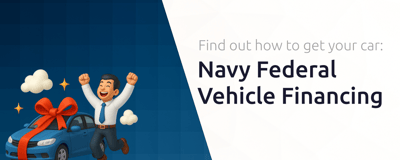When unexpected expenses knock on your door, having a clear plan can transform panic into action. This guide walks you through the maze of emergency loan options, helping you choose a solution that fits your needs and safeguards your financial future.
When Crisis Strikes: The Need for Fast Funding
Life’s emergencies often arrive without warning. A sudden medical bill, a major car repair, or loss of income can send anyone into a tailspin. In those moments, you want reliable access to cash and a clear path forward.
Choosing the wrong loan can compound stress with unmanageable debt. By understanding the landscape of available products, you can secure funds quickly yet responsibly, preserving both your money and your peace of mind.
Types of Emergency Loans
Not all emergency loans are created equal. Each option has unique features in terms of speed, cost, and eligibility requirements. Identifying the right type for your situation is the first step toward smart borrowing.
- Personal Loans from Banks or Credit Unions: These can range from $1,000 to $50,000, with APRs between 7% and 36%. They offer predictable repayment schedules over one to seven years, but require a credit check and may include origination fees.
- Credit Card Cash Advances: If you already have a credit card, you can borrow against your limit immediately. Interest accrues from day one at high APRs, and fees can reach 5% of the amount advanced.
- Payday Loans: Ultra-short-term loans due on your next payday. Amounts are small—usually under $1,500—but APRs can exceed 400%. They’re easy to obtain without a credit check, yet carry a high risk of a debt cycle.
- Title Loans: These require using your vehicle’s title as collateral. You may borrow up to 50% of the car’s value, but failure to repay can mean losing your vehicle.
Other niche alternatives include employer paycheck advances, pawnbroker loans secured by valuables, and government disaster relief grants for qualifying events. Weigh each option against your credit health, urgency, and long-term budget.
Comparing Top Lenders in 2025
Leading lenders tailor products to different credit profiles and needs. The table below highlights key players and their specialties, helping you narrow down potential sources.
Key Factors to Consider
Before signing any agreement, take time to review these critical aspects:
- Urgency vs. Cost: Do you need money within hours, or can you wait a few days for a lower rate?
- Credit Score Impact: Many lenders use your credit history to determine APRs and eligibility.
- Loan Amount Needed: Small emergencies may fit a cash advance, while larger gaps often require personal loans.
- Repayment Timeline: Short terms can mean high fees; longer terms reduce monthly stress but may cost more over time.
- Total Cost of Borrowing: Include interest, origination fees, and any prepayment penalties.
Develop a clear repayment plan before borrowing. Calculate monthly payments in the context of your budget, so you avoid falling behind.
Warning Signs: Red Flags to Avoid
Predatory lenders often hide sky-high fees behind fine print. Watch out for these warning signals:
- Requests for upfront fees before approval.
- Promises of no-credit-check approval with extremely low rates.
- Pressure to sign immediately or face higher costs.
A reputable lender will provide transparent disclosure of APR, all fees, and a clear payoff schedule. If something feels wrong, step back and compare other offers.
Smart Strategies for Borrowing Wisely
Even in a pinch, you can make choices that minimize long-term damage to your finances. Consider these practical tips:
- Prequalify with multiple lenders using soft credit pulls to compare offers without harming your score.
- Borrow only the exact amount you need—no more, no less.
- Build or tap an emergency fund gradually to reduce reliance on high-cost loans in the future.
- Explore non-loan alternatives such as borrowing from friends, family, or nonprofit credit counselors.
Maintaining clear communication with lenders about your repayment schedule can prevent surprises and late fees down the line.
Conclusion: Empowering Your Financial Recovery
Emergencies test our resilience, but thoughtful planning can keep you afloat. By examining each loan’s features—interest rates, repayment terms, eligibility criteria—you gain the power to choose a path that solves your immediate need without sacrificing future stability.
Remember, the best emergency strategy often starts before the crisis: build savings, understand your credit profile, and keep reputable lending relationships on standby. When trouble hits, you’ll be ready, confident, and in control.
References
- https://www.bankrate.com/loans/personal-loans/types-of-emergency-loans/
- https://www.lendingtree.com/personal/emergency/
- https://www.af247.com/blog/understanding-the-different-types-of-emergency-loans/
- https://www.businessinsider.com/personal-finance/personal-loans/best-emergency-loans
- https://www.investopedia.com/emergency-loans-for-bad-credit-5075539
- https://www.nerdwallet.com/best/loans/personal-loans/emergency-loans
- https://www.fema.gov/grants/preparedness/emergency-management-performance/fy-24-nofo
- https://wiseloan.com/blog/types-emergency-loans/














